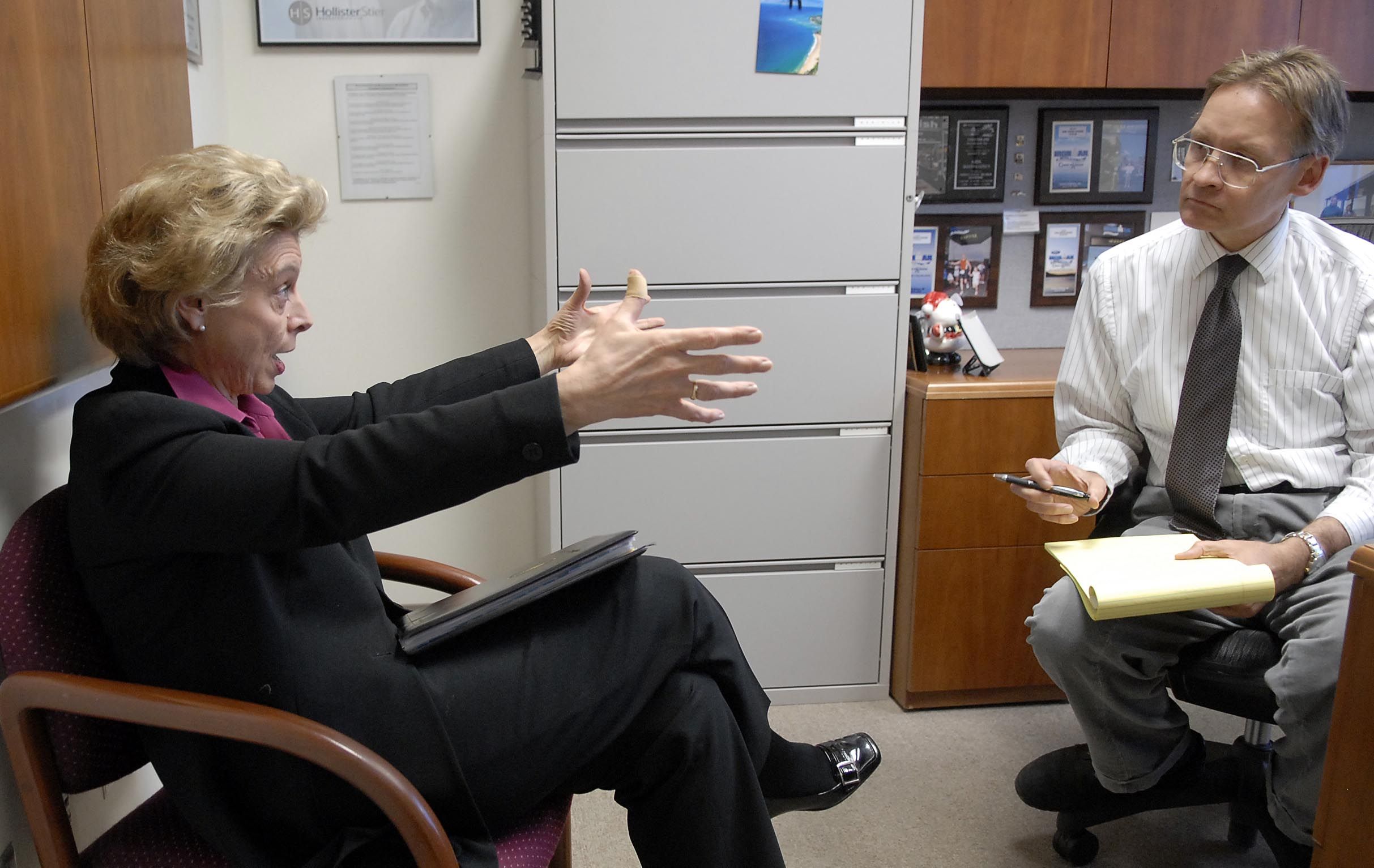Sunday Spin: Bipartisanship in the eye of the beholder
The problem was that bipartisan seems to mean different things to different people. . .
To read the rest of this item, or to comment, go inside the blog
. . . For the 23 Republicans and two disaffected Democrats running the Senate, bipartisanship seems to be defined by the number of bills sponsored by members of the 24 minority Democrats that passed the chamber.
Of the 276 non-budgetary bills the Senate managed to pass, 88 – 32 percent – were sponsored by minority Democrats. A clear sign of bipartisanship, majority leaders said. In the numbers games that often consume the middle of a session, these figures initially seem impressive on a couple levels.
First, 276 bills is a more than usually manage to work their way through the minefield of designed to winnow out the vast majority of great ideas that spring from the minds of legislators to become bills.
A person too hide-bound to numbers and ratios might argue that since minority Democrats make up 49 percent of the Senate, true bipartisanship would suggest they’d sponsor around 49 percent of the passing bills. Someone who subscribes to the theory that the majority can and should do as it pleases under the rules that govern the Legislature might counter that anything above 0 percent is a gift.
Republicans who are in a more distinct minority in the House of Representatives professed to be green with envy whenever their friends in the other chamber broached the topic of minorities passing bills. So envious, that one might have thought no GOP bills escaped the iron-fisted leadership of Speaker Frank Chopp. In fact, 60 of the 365 non-budgetary bills that passed the House had Republican prime sponsors. For those keeping score at home, that’s about 16 percent, or half the passage rate of Senate Democrats.
But a closer look at the Democrat-sponsored Senate bills reveals that they could have been proposed by almost anyone and passed. Of those 88, the vast majority sailed through with, at best, token resistance. Many had Republican co-sponsors. The chamber requires 25 votes to pass, and only five of these went through with fewer than 40 yes votes; only two could be considered close with fewer than 30 yes votes.
The bulk include such controversial topics as coming up with new groups that should be honored with special license plates, cracking down on child abuse and sex trafficking, doing more to boost the Holy Grails of education – science, technology, engineering and math – or allowing folks to get a drink of something stronger than soda at a day spa or a movie.
To be clear, the vast majority of the majority coalition’s non-budgetary bills also moved through the Senate with 40 or more votes. There’s a truth about the Legislature that we perfidious reporters rarely tell you: Most bills that pass the Legislature do so with huge majorities. We hide this from you by focusing mainly on controversial tight votes, just as we generally ignore the bazillions of planes that land safely while writing reams about the few that crash.)
When comparing Senate bills that survived truly close votes – passing with fewer than 30 votes and maybe in doubt at some point in the process – majority Republicans the overwhelming had the edge, sponsoring 20 of the 22. They contain some changes that business groups like and organized labor doesn’t, like changes to injured worker settlement rules, prevailing wage and minimum wage laws.
It is on these bills that the Senate majority coalition must now make the case to House Democrats that these are truly bipartisan ideas, on the strength of a few votes from minority Democrats in the Senate rather than those cushy 49-0 vote counts.
Good luck with that.
